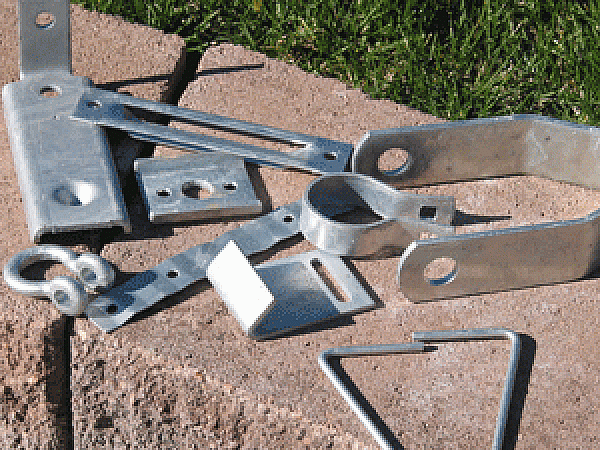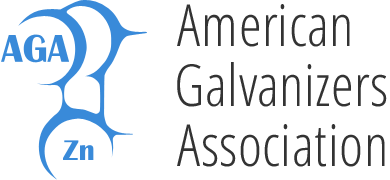RoHS & REACH: A 2025 Update

Back in 2012, AGA provided an update on the European Union’s (EU’s) RoHS (Restriction of Hazardous Substances) and REACH (Registration, Evaluation, and Authorization of Chemicals) legislation. Thirteen years later, questions about RoHS and REACH still arise. While there have been some new restrictions and requirements, not much has changed that impacts the use of hot-dip galvanizing.
RoHS
Background
The EU RoHS Directive, effective since July 1, 2006, is intended to eliminate or significantly reduce the use of listed harmful substances in electrical and electronic equipment (EEE), such as computers, appliances, and lighting, by setting maximum concentration values (MCVs) for these substances in products. The goal is to lower chemical concentrations to levels that make handling safer for workers in the recycling industry.
The original RoHS Directive, Directive 2002/95/EC, restricted the use of six hazardous substances (cadmium, lead, mercury, hexavalent chromium, polybrominated biphyenyl (PB), and polybrominated diphenyl ether (PBDE)) and has undergone two revisions since its inception in 2002:
Directive 2011/65/EU (RoHS 2) - replaced Directive 2002/95/EC
- Expanded the list of electrical products covered
- Introduced CE (Conformitee Europeenne) marking requirements, requiring EEE manufacturers to affix a CE mark to demonstrate compliance.
Directive 2015/863 (RoHS 3) - Amended Annex II of RoHS 2
- Added four new hazardous substances (all phthalates) to the restricted list.
RoHS restricts ten substances:
Hazardous Substance |
Maximum Concentration (% by weight) |
Cadmium (Cd) |
0.01% (100 ppm) |
Lead (Pb) |
0.1% (1000 ppm) |
Mercury (Hg) |
0.1% (1000 ppm) |
Hexavalent Chromium (CrVI) |
0.1% (1000 ppm) |
Polybrominated Biphenyls (PBB) |
0.1% (1000 ppm) |
Polybrominated Diphenyl Ethers (PBDE) |
0.1% (1000 ppm) |
Bis(2-Ethylhexyl) phthalate (DEHP) |
0.1% (1000 ppm) |
Benzyl butyl phthalate (BBP) |
0.1% (1000 ppm) |
Dibutyl phthalate (DBP) |
0.1% (1000 ppm) |
Diisobutyl phthalate (DIBP) |
0.1% (1000 ppm) |

Applicability to Galvanized Products
Most galvanized steel products fall outside the scope of RoHS due to their nature and end use. For instance, bridge beams, light poles, and guardrails are not considered EEE and are not targeted by the directive. However, some galvanized products, such as fasteners or support structures used to mount or assemble electronic cabinets, racks or enclosures, may fall under RoHS requirements, particularly regarding lead content. The Directive’s Annex III outlines exemptions that allow the use of restricted substances like lead in specific applications where suitable alternatives are not available. For galvanized products subject to RoHS, lead exemption 6(a)II applies.
RoHS Lead Exemption 6(a)II – Lead as an alloying element in batch hot-dip galvanized steel components containing up to 0.2% lead by weight. Valid until December 31, 2026.
This exemption permits up to 0.2% lead by weight across the entire steel component, not just the galvanized coating. Products meeting this exemption are considered compliant, and supporting documentation, if required, should state, ‘This product satisfies the requirements of RoHS Exemption 6(a)II for lead.’
Galvanizers in N. America primarily use Special High Grade (SHG) and High Grade (HG) zinc in their kettles. Using SHG as an example, ASTM B6, Standard Specification for Zinc, limits lead and cadmium to a maximum of 0.003% each, well below RoHS thresholds. Additionally, the AGA study, Lead in the Hot-Dip Galvanized Coating, found the average lead content in the finished coating is approximately 50% of the lead present in the zinc bath. When evaluating only the galvanized coating, a zinc lead content of 0.003% results in approximately 0.0015% lead in the coating, well below the 0.2% threshold applied to the entire steel component.
Hexavalent chromium is another substance restricted under RoHS. Galvanizers applying hexavalent chromium passivation or post-galvanizing treatment for EEE products covered by RoHS should consider a maximum bath concentration of 0.1% to ensure the passivation coating does not exceed the RoHS threshold. Trivalent chromium, which is RoHS complaint, is widely used as an alternative to hexavalent chromium for passivation coatings.
REACH
Background
The REACH regulation has been in place across the EU since June 1, 2007, and is managed by the European Chemicals Agency (ECHA). Under this policy, companies that manufacture or import chemicals into the EU must register them so their potential risks can be evaluated. Certain chemicals that pose serious risks to people or the environment are added to the “Substances of Very High Concern” (SVHC) list and include carcinogens, reproductive toxins, mutagens, and chemicals that build up in the environment over time. As of June 2025, there are 250 entries on the SVHC Candidate List. Zinc is not listed, but lead, cadmium, and hexavalent chromium are.
Applicability to Galvanized Products
Hot-dip galvanized products are classified as articles under REACH. This means:
- The galvanized coating is not treated as a separate article.
- Chemical content is calculated as a percentage of the entire product (steel + coating).
- SVHC thresholds apply at 0.1%
Galvanized steel is treated as a single article under REACH, meaning chemical thresholds apply to the entire product rather than just the coating. As a result, these materials are unlikely to exceed REACH thresholds. In addition, if you are not directly importing into the EU, REACH registration typically does not apply. The responsibility for compliance lies with your EU customers or importers. However, members may still be asked to provide documentation confirming that galvanized products do not contain SVHCs above the 0.1% threshold.
Example: Customer Query on EU Waste Framework Directive SCIP Database applicability
In 2021, AGA received questions about how the EU Waste Framework Directive SCIP Database (Substances of Concern In Products) applies to galvanized steel. This directive, which extends the REACH regulation, requires reporting of articles containing SVHCs above 0.1%. Although companies in the U.S., Canada, and Latin America are not directly responsible for SCIP submissions, their EU importers are. Non-EU suppliers, including galvanizers, may still be asked to provide SVHC information to help their EU customers comply. Because the galvanized coating is only a subcomponent of the finished article, customers may request confirmation the coating is below SVHC thresholds. Members can address this by noting their zinc (SHG) meets ASTM B6 requirements and by providing a kettle assay showing no SVHCs above 0.1%.
U.S. States Adopting RoHS or REACH-Type Regulations
Several U.S. states have introduced regulations that are similar to EU’s RoHS directive. California, New Jersey, Illinois, Indiana, Minnesota, New York, Rhode Island, and Wisconsin have put requirements in place that limit certain substances, require reporting, or both. In addition, many states have their own electronic-waste laws, some of which include restrictions on hazardous materials.
No U.S. states have adopted the EU’s REACH regulation entirely. Several states have developed chemical safety programs with similar goals, focusing on identifying harmful substances and encouraging safer alternatives. California, Maine, Oregon, Washington, and Vermont have all created initiatives to promote proactive chemical management. Because requirements can vary, it’s important to check state regulations to see if they apply to your products.
Do I need to worry about EU’s RoHS or REACH?
In most cases these regulations are not applicable, but it is important to verify whether your material falls within the scope of these regulations.
- RoHS: Most galvanized products are outside the scope. For those that may be covered, refer to Lead Exemption 6(a)II and document compliance accordingly.
- REACH: This regulation likely does not apply, as galvanized products are considered articles. SVHC content is calculated across the entire article (steel + coating), and the galvanized steel is unlikely to exceed the relevant thresholds.
Visit the following websites for more information on RoHS, REACH, and state regulations.
RoHS
- Restriction of Hazardous Substances in Electrical and Electronic Equipment (RoHS)
- Guidance Document: Regulations: Restriction of Hazardous Substances (RoHS)
- RoHS Lead Exemption 6(a)II
- RoHS Requirements in the United States: An Overview
REACH
- Registration, Evaluation, Authorization and Restriction of Chemicals (REACH)
- ECHA Guidance on requirements for substances in articles (REACH)
- Waste Framework Directive SCIP Database
States with RoHS-type of Regulation
- California RoHS Law
- New Jersey’s Electronic Waste Management Act
- Illinois – Electronic Products Recycling and Reuse Act
- Indiana E-Waste Law
- Minnesota Electronics Recycling Act
- New York Electronic Equipment Recycling And Reuse Act
- Rhode Island – Electronic Waste Prevention, Reuse, and Recycling Act
- Wisconsin – Electronic Waste Recycling
States with REACH-type of Regulation
© 2025 American Galvanizers Association. The material provided herein has been developed to provide accurate and authoritative information about after-fabrication hot-dip galvanized steel. This material provides general information only and is not intended as a substitute for competent professional examination and verification as to suitability and applicability. The information provided herein is not intended as a representation or warranty on the part of the AGA. Anyone making use of this information assumes all liability arising from such use.

